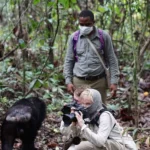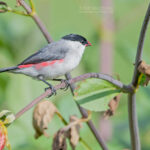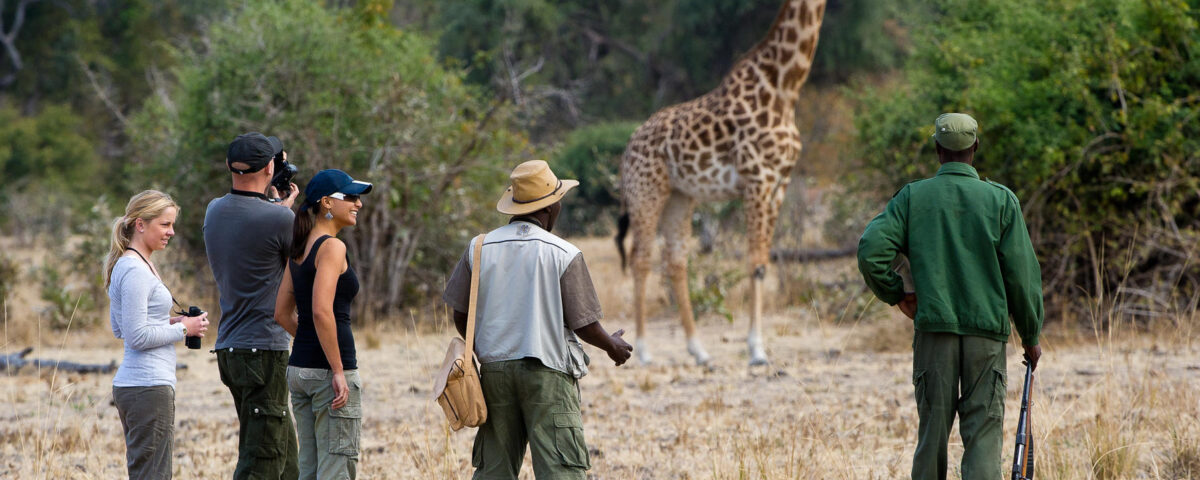
How Close Can I Get to the Chimpanzees?
October 2, 2025
How Do I Book a Uganda Birding Safari?
October 3, 2025How Close Can I Get to Wildlife on a Walking Safari?
Many travelers ask, “How close can I get to wildlife on a walking safari?” and this question captures the essence of one of the most thrilling ways to experience Uganda Safaris. Walking safaris are designed to provide a more intimate, immersive encounter with nature than traditional game drives, allowing visitors to move quietly through savannahs, forests, and wetlands while observing wildlife behavior up close. EcoQuest Safaris emphasizes that the proximity you can achieve depends on several factors, including the type of wildlife, the terrain, the skill of your guide, and adherence to safety protocols.
Introduction: Understanding the Walking Safari Experience
Walking safaris in Uganda offer unique opportunities to combine adventure with education. Guided by highly trained rangers, travelers can learn about animal tracks, feeding patterns, and behaviors while maintaining a safe distance that respects both the animals and visitors. For example, when exploring Queen Elizabeth National Park on a walking safari, guests can observe elephants grazing or buffalo herds moving across plains, while hearing stories about the ecosystems they inhabit. Many visitors extend this experience by combining walking safaris with Uganda Gorilla Trekking Safaris or Uganda Chimpanzee Safaris, making the journey an unforgettable wildlife adventure. In essence, understanding “How close can I get to wildlife on a walking safari?” sets the stage for a deeper appreciation of Uganda’s diverse habitats and the wildlife they support.
Factors Influencing Wildlife Proximity on Walking Safaris
When travelers ask, “How close can I get to wildlife on a walking safari?”, it’s important to recognize that the answer varies by species, environment, and expert guidance. Walking safaris differ from vehicle-based safaris in that they bring humans closer to the ecosystem’s natural rhythms. Guides use their experience to help travelers safely approach animals while maintaining a respectful distance. For herbivores like antelopes, zebras, or giraffes, walkers may observe them from as close as 10 to 15 meters, allowing for detailed photography and observation of social interactions. Predators, however, are always approached with extreme caution, and the distance can extend to hundreds of meters depending on the species and behavior.
EcoQuest Safaris emphasizes that walking safaris are carefully planned to minimize risk while maximizing engagement. This means groups are kept small, the pace is slow, and wildlife encounters are carefully timed. By asking “How close can I get to wildlife on a walking safari?”, travelers are encouraged to focus not only on physical proximity but also on quality of observation. Walking safaris in Uganda often pair perfectly with Uganda Birding Safaris, where enthusiasts can get near endemic species like the African green broadbill or shoebill stork without disturbing their habitat. Many adventurers also combine these walks with Uganda Cultural Safaris, interacting with local communities to understand how conservation and culture coexist, making every walking safari a holistic experience.
Walking Safaris: A Unique Perspective on Uganda Wildlife
Answering the question, “How close can I get to wildlife on a walking safari?”, requires an appreciation of the immersive perspective walking tours provide. Unlike vehicle safaris, which create a buffer between humans and animals, walking safaris allow travelers to experience sounds, smells, and subtle movements that reveal more about animal behavior. Observing a family of elephants slowly moving through the forest or noticing primates swinging between trees provides a sensory depth that cannot be replicated in a car. EcoQuest Safaris highlights that this intimacy is what makes walking safaris among the most sought-after Uganda Best Safaris.
Walking safaris also provide unparalleled opportunities to combine wildlife viewing with education. Rangers point out tracks, nests, and signs of nocturnal animals, offering insights into ecosystems that enrich the safari experience. Combining this with Uganda Gorilla Trekking Safaris or Uganda Chimpanzee Safaris can make a multi-day journey that covers Uganda’s primates and large savannah mammals. For those asking “How close can I get to wildlife on a walking safari?”, the answer often exceeds expectations: while safety protocols maintain a respectful distance, the feeling of being fully immersed in nature provides a closer connection than vehicle-based observation.
Safety and Ethical Considerations on Walking Safaris
When travelers inquire, “How close can I get to wildlife on a walking safari?”, safety and ethical considerations are critical. EcoQuest Safaris ensures that every walking safari adheres to stringent guidelines designed to protect both wildlife and participants. Approaching animals too closely can stress them or provoke defensive behavior, so guides emphasize safe distances that allow photography, observation, and learning without compromising the animals’ well-being. These practices align with Uganda Wildlife Safaris’ conservation principles and help maintain the integrity of natural habitats.
Ethical guidelines extend beyond proximity. Walking safaris discourage noise, sudden movements, and any activity that could alter animal behavior. By understanding “How close can I get to wildlife on a walking safari?”, visitors gain a deeper appreciation for responsible tourism and the delicate balance between adventure and conservation. Many travelers combine walking safaris with Uganda Birding Safaris and Uganda Cultural Safaris to further support conservation awareness while engaging with local communities. The integration of walking safaris with other Uganda adventures—such as Uganda Gorilla Trekking Safaris—reinforces EcoQuest Safaris’ commitment to immersive, educational, and ethical travel experiences that reflect expertise and authority in Africa tourism.
Walking Safaris and Uganda’s Cultural Heritage
A frequently overlooked aspect of walking safaris is the opportunity to integrate Uganda Cultural Safaris. Visitors who ask, “How close can I get to wildlife on a walking safari?”, often discover that these tours can include stops in local communities to learn about traditional customs, crafts, and local conservation initiatives. For example, in Queen Elizabeth National Park, travelers may observe wildlife tracks and then visit nearby villages to understand how communities coexist with elephants or buffaloes.
EcoQuest Safaris emphasizes the synergy between wildlife immersion and cultural exploration. While walking safaris provide up-close encounters with Uganda’s iconic wildlife, integrating cultural experiences enriches understanding and ensures the trip benefits both conservation and local communities. Many itineraries allow travelers to combine walking safaris with Uganda Gorilla Trekking Safaris, wildlife viewing in Murchison Falls, or birding along Lake Bunyonyi. For those curious about “How close can I get to wildlife on a walking safari?”, this combination provides a holistic safari experience, blending adventure, education, and cultural engagement for a truly world-class Uganda safari.
Combining Walking Safaris with Gorilla and Chimpanzee Trekking
A question frequently posed alongside “How close can I get to wildlife on a walking safari?” is whether these walks can be paired with primate trekking. EcoQuest Safaris recommends combining walking safaris with Uganda Gorilla Trekking Safaris in Bwindi Impenetrable Forest or Uganda Chimpanzee Safaris in Kibale Forest. This combination allows travelers to experience both terrestrial wildlife and primates in one itinerary, creating a comprehensive Uganda safari.
Walking safaris offer educational elements such as tracking, animal behavior observation, and forest ecology, which complement the gorilla or chimpanzee experience. For instance, after a morning walk in Queen Elizabeth National Park to observe elephants, giraffes, and antelopes, travelers can continue to Bwindi to encounter mountain gorillas in their natural habitat. Similarly, walking safaris in Kibale or Budongo forests offer insights into chimpanzee behavior, which enhances understanding when trekking in other primate habitats. By asking “How close can I get to wildlife on a walking safari?”, travelers unlock the potential to combine diverse safari experiences, optimizing both wildlife encounters and cultural learning in Uganda’s richest landscapes.
Best Times and Places for Walking Safaris in Uganda
Travelers often ask, “How close can I get to wildlife on a walking safari?” and it’s important to highlight that timing and location greatly influence the experience. Early mornings and late afternoons provide the best opportunities, as wildlife is most active during these hours. Walking safaris in savannahs, such as Queen Elizabeth and Murchison Falls, offer sightings of elephants, lions, and buffalo, while forested areas like Kibale and Budongo are ideal for primates and birding enthusiasts.
EcoQuest Safaris designs itineraries that optimize wildlife encounters while respecting safety protocols. Walking safaris can be combined with Uganda Birding Safaris, where travelers can approach endemic species, and with Uganda Cultural Safaris, to visit communities and local markets. By understanding “How close can I get to wildlife on a walking safari?”, travelers gain insight into both the ecological rhythms and the social landscapes of Uganda. Combining timing, location, and expert guidance ensures that every walk is both safe and deeply rewarding.
Walking Safaris: Enhancing the Uganda Safari Experience
Walking safaris are more than just observing wildlife—they are about experiencing Uganda intimately. When travelers ask, “How close can I get to wildlife on a walking safari?”, the real answer goes beyond meters: it’s about engagement, understanding, and conservation awareness. EcoQuest Safaris ensures that every walking safari connects travelers with the land, wildlife, and local culture in a meaningful way.
By pairing walking safaris with Uganda Gorilla Trekking Safaris, Uganda Chimpanzee Safaris, and other wildlife experiences, travelers can create a comprehensive journey that spans forests, savannahs, and lakes. Integration of Uganda Birding Safaris and Uganda Cultural Safaris provides a rich multi-dimensional experience, ensuring that each visitor understands the depth of Uganda’s biodiversity and the importance of conservation. Ultimately, asking “How close can I get to wildlife on a walking safari?” opens the door to a full Uganda adventure that combines thrill, education, and culture, cementing EcoQuest Safaris as a trusted authority in East African tourism.

